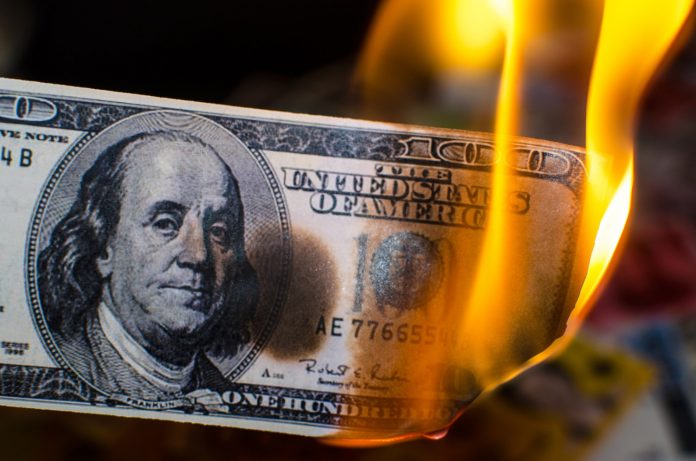Stocks rallied this morning as “hike day” got underway. The June FOMC meeting wraps up this afternoon, and following its conclusion, Fed Chairman Jerome Powell is expected to announce a 75 basis point (bps) rate hike. This is up from the prior consensus estimate of 50bps, made before last Friday’s May CPI release, which showed that inflation is still rising in the US.
Analysts were split on whether a stronger hike would please investors.
“The change in the headline from 50 basis points to 75 basis points reflects a stark reality but it also reflects the Fed’s determination to underscore its commitment to its mandate to maintain price stability,” said LPL Financial’s Quincy Krosby.
“It’s neither a trial balloon nor a lead balloon — it’s reality.”
Peter Tchir, head of macro strategy at Academy Securities, put his own spin on the situation in a morning note to clients:
“Expect 75 bps. Expect tough talk on inflation front, but tempered with data dependency,” he said.
“Expect markets to like the bigger hike, as it ‘proves’ the fight against inflation is real. Expect markets to get excited about the data dependency.”
Tchir added that a hike of just 50bps could actually provoke a deeper selloff, driven by chaos in the bond markets.
Overall, he thinks we’ll see a leap higher in stocks followed by a slight retracement into the close.
Barclays, Deutsche Bank, Goldman Sachs, and JPMorgan all expect a 75bps hike this afternoon. Citi, Bank of America, and Morgan Stanley, on the other hand, all say that a 50bps increase is on its way.
Meanwhile, Pershing Square founder Bill Ackman is hoping for a 100bps hike.
“100bps tomorrow, in July and thereafter would be better. The sooner the @federalreserve can get to a terminal [federal funds] rate and thereafter can begin to ease, the sooner the markets can recover,” he tweeted.
It’s a pessimistic take but one that’s completely valid. A 75bps hike puts the US closer to a recession. A 150bps hike would do it even faster, which means the quantitative easing (QE) reboot and rate cuts that inevitably follow will come sooner.
It’s said that the stock market “looks forward” roughly six months. If stocks surge to close out the week, does that mean we’ll have a recession and QE by mid-December? We certainly could if the Fed puts the pedal to the metal and tightens aggressively over the next few months.
In Ackman’s note, he also observed that former Fed Chairman Paul Volcker “needed [a] 20% [federal funds rate] for similar levels of inflation measured comparably. Assuming a 4% terminal rate gets it done is hopium. Hopefully, 5%-6% gets it done if the Fed gets there quickly.”
The current federal funds rate is 1.00%. The Fed needs to hike by 400bps (4%) to hit Ackman’s target minimum of 5%. Will the Fed actually raise rates that much, though? Probably not. And that could lead to the worst outcome possible:
A weak tightening cycle that spurs on a recession but fails to beat back inflation.
If the Fed goes too slow with the rate hikes, it may simply induce “stagflation” instead. That’s why stronger rate hikes make the most sense for Powell. The US is headed for a recession, anyway.
The Fed might as well make it a short one while simultaneously increasing its odds of defeating inflation via heavy handed rate increases, which should prove to be bullish as they would ultimately hasten the arrival of QE, the market’s favorite 2-letter acronym.








